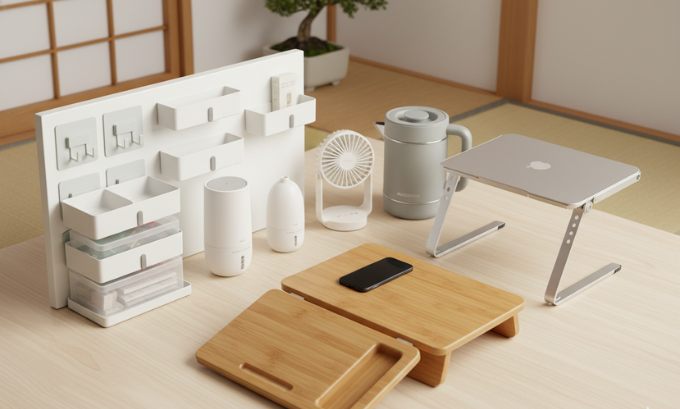Are you considering launching an online business in Japan? The best e-commerce business ideas for beginners in Japan enable new sellers to tap into local demand, leverage global trends, and start with manageable risks. This guide will outline actionable options, break down costs, and showcase real scenarios using marketplace data and Japanese consumer habits.
Let’s explore how you can join Japan’s fast-growing e-commerce scene with focus, insight, and confidence.
The best e-commerce business ideas for beginners in Japan center on trending household products, using platforms like Amazon Japan or your own store with Shopify. Sourcing affordable goods from Japanese wholesalers or international suppliers (like those found on Indamar) allows new entrepreneurs to fill market gaps while managing start-up costs. Dropshipping, which is gaining traction in Japan, is another practical way to test products with minimal inventory risk.
Proven approaches include:
- Reselling locally relevant items, such as home organization tools or seasonal gadgets
- Opening a Shopify store to feature trending products discovered through market research
- Using dropshipping for risk-free product validation
- Comparing prices on Amazon Japan and B2B sites like Indamar for healthy margins
Table of Contents
Popular Products in Japan: Finding Trending Items that Sell
Success often starts with selling goods that Japanese shoppers already seek out and buy frequently. In a convenience-driven society, products that solve everyday challenges are a smart bet.

Real Use Case: Cockroach Repellent Device—A Japanese Summer Staple
In Japan’s humid summer, cockroaches (gokiburi) become unwelcome guests in many homes. The cockroach repellent device—an ultrasonic plug-in—proves especially popular between May and September.
- Amazon Japan Price: Around ¥1,500
- Wholesale (Indamar or Rakuten B2B): From ¥200/unit (bulk pricing)
- Monthly Demand: 400+ orders
Profit Snapshot: After platform fees and shipping (explained below), the profit per sale is substantial, particularly during peak season.
I started my own trial by importing 50 units, listing them on Amazon Japan, and targeting Tokyo households. Orders climbed quickly with summer’s onset, proving that even simple appliances can become profitable bestsellers when matched to Japanese consumer needs.
Understanding Fees: How Amazon Japan and Shopify Impact Your Profits
Before diving into sales projections, it’s essential to know how platforms in Japan affect your real earnings. The Amazon commission structure and sales tax (Japanese 消費税) must factor into your calculations. Shopify has a straightforward monthly plan but requires you to bring your own customers.
Amazon Japan Fees and Consumption Tax (Shōhizei)
- Referral Fee: Varies by product category; for small household goods, usually 8–15%. For a laptop table or organizer, 10% is typical.
- Fulfillment by Amazon (FBA): Shipping/storage, starts around ¥400/item for small products.
- Closing Fee: Fixed (often ¥100–¥200/item), depending on category.
- Consumption Tax (10%): Applies to Amazon fees and shipping.
Example Calculation: Cockroach Repellent Device
| Item | Amount |
|---|---|
| Selling Price | ¥1,500 |
| Product Cost | ¥200 |
| Amazon Fees + Shipping | ~¥500 |
| Net Settlement | ¥1,000 |
| Net Profit | ¥800 |
Multiply that by hundreds of units over the summer, and you have a healthy small business right from your home.
Shopify for Japan: Building Your Brand
- Flat Monthly Fee: Starts at $39 (about ¥5,500), paid in yen
- No per-sale commission (outside of payment processing)
- Control of customer relationships, store design, and branding
- Dropshipping Integration: Direct connections to global and domestic suppliers
Many Japanese entrepreneurs prefer Shopify for selling specialty goods, imported items, or products with unique branding.

Examples to Inspire: Hot-Selling Products in the Japanese Market
Choosing the right product means blending local relevance, low competition, and solid supplier connections.
Self-Adhesive Storage Organizer: Maximizing Japanese Floor Space
With smaller homes and apartments the norm, Japanese shoppers value space-saving tools. The self-adhesive storage organizer—used in bathrooms and kitchens—fits this trend perfectly.
- Amazon Price: Around ¥1,800
- Japan/Indamar Wholesale Cost: Around ¥400–¥500
- Monthly Orders (Top Seller): 1,000+
By offering improved product images, Japanese instructions, or creative packaging, new sellers often break in despite established competition. Even after fees and shipping, profits of ¥600–¥700 per unit are common for top-rated listings.
Laptop Table: Flexible Work-From-Home Solutions
Demand for home office goods soared during and after the pandemic in Japan. A simple, folding laptop table is a current staple for students and teleworkers.
- Retail Price: Around ¥3,500 (Amazon)
- B2B Cost: ¥1,200–¥1,500/unit
- Amazon Fees (Est.): ¥450 (commission) + ¥400 (fulfillment) + ¥150 (closing)
- Net Profit Per Sale: ~¥1,000+
With monthly volume for top sellers hitting 2,000+ units, this category can generate stable, recurring income—especially if paired with Japanese design trends or collaborative promotions.
Comparison Table: Starter Product Strategies for Japan
| Product | Amazon Price | Wholesale Cost | Net Profit | Avg. Monthly Volume | Key Advantages | Drawbacks |
|---|---|---|---|---|---|---|
| Cockroach Repellent Device | ¥1,500 | ¥200 | ¥800 | 400+ | Seasonal spike, easy storage | Strongest in summer only |
| Self-Adhesive Organizer | ¥1,800 | ¥450 | ¥700 | 1,000+ | Fits small spaces, high demand | Needs local instructions |
| Laptop Table | ¥3,500 | ¥1,400 | ¥1,000 | 2,000+ | Office boom, steady market | Heavier shipping, price wars |
Dropshipping and Shopify: Modern Models for Japan
Definition: Dropshipping means listing products online and forwarding orders to a third party (often based overseas or in Japan), who ships directly to your Japanese customers. You never handle stock yourself.
Shopify supports dropshipping in Japanese, works with local payment systems (PayPay, Konbini), and provides apps for integration with both global (AliExpress/Oberlo) and local suppliers.

Pros of Shopify/Dropshipping for Japanese Beginners
- No upfront inventory costs
- Huge product variety, from gadgets to lifestyle accessories
- Easy translation and localization for Japanese audiences
- Simple expansion to international customers
Cons and Cautions
- Lower per-sale margins versus direct wholesaling
- You need to drive your own traffic—SEO, Instagram, and LINE marketing help
- Quality control: vet suppliers carefully, as Japanese consumers expect high standards and prompt delivery
Many first-time entrepreneurs start with dropshipping on Shopify, then shift to bulk importing or private labels as sales pick up.
What Makes E-Commerce Work for Beginners in Japan?
- Cultural Fit: Products should reflect Japanese preferences for space-saving, minimalism, or unique design.
- Japan-Specific Research: Use Amazon Japan’s Best Sellers, Rakuten rankings, and social trends (like Twitter or Yahoo! Japan).
- Sourcing: Indamar is an example for comparison with Japanese B2B platforms; domestic suppliers (like Super Delivery) are excellent for quality control.
- Legal Compliance: Understanding Japanese consumption tax (shōhizei), import rules, and platform obligations is crucial.
- Language and Logistics: Localized listings build trust; fast delivery and simple returns matter greatly in Japan.
Areas for Improvement: Real-World Challenges
- Fierce Competition: Popular products on Amazon Japan quickly attract copycats.
- Customer Service Expectations: Japanese buyers value courteous, rapid responses and high-quality packaging.
- Complex Taxation: Learn about Japan’s shōhizei and electronic records requirements early.
- Trend Sensitivity: What’s hot (e.g., home fitness) can change fast; constant product research is essential.
- Shipping and Returns: International sellers must offer clear, easy return policies and minimize delivery times.
If you want to scale business in Japan you can visit linkluminous.com. it can be your trusted digital business partner in Japan
FAQ: E-Commerce in Japan—Get Your Questions Answered
Q1: Which e-commerce platform is best for beginners in Japan?
A: For most, Amazon Japan offers ready buyers and fast sales; Shopify is ideal for brand builders who want more control.
Q2: Do I need to register a business to sell online in Japan?
A: Not for small side projects, but a proper company (Kabushiki Kaisha or sole proprietorship) is required as you scale, especially to handle taxes and supplier relationships.
Q3: How do I find trending products for the Japanese market?
A: Monitor Amazon Japan’s Best Seller lists, check Rakuten trends, or explore LINE groups and Twitter. B2B sites like Indamar can reveal global price advantages.
Q4: How much money should I save to start?
A: Side businesses can launch with under ¥100,000 ($700) for trial inventory on Amazon; Shopify dropshipping can begin with your monthly fee and small ad budget.
Q5: Are there local alternatives to Indamar or Alibaba?
A: Yes—Super Delivery, Netsea, and Smile Wholesale are respected domestic B2B options, often favored for consistency in Japan.
Q6: What taxes apply to my sales?
A: Japan requires 10% shōhizei (consumption tax) on sales and on certain fees. Amazon and Shopify Japan explain these charges clearly for sellers.
Q7: Can I sell internationally from Japan?
A: Absolutely. Many Japanese sellers use Amazon Global, Shopify, or eBay to reach buyers abroad—research export rules and localization strategies.
Conclusion: Charting Your Path in Japanese E-Commerce
The best e-commerce business ideas for beginners in Japan blend local insight, hands-on testing, and honest adaptation to consumer tastes. Whether you leverage Japan’s powerful Amazon marketplace, build a Shopify store, or experiment with dropshipping, start with one product—test, learn, and grow from there.
Success in Japanese e-commerce does not require huge capital or complex technology at first. What matters is understanding your market, delivering quality, and building customer trust through authentic communications and reliable fulfillment.
Your first step could be the start of a thriving business. With careful research and a focus on Japanese shoppers’ real needs, you’ll be well-equipped to shape your own e-commerce story.
Author Bio
Yoshi Tanaka is a specialist in Japan’s online retail market, with a decade of experience guiding new entrepreneurs, startups, and growing brands. He has written for Nikkei, Japan Times, and Shopify Japan, and regularly mentors beginners in both Japanese and international e-commerce.
References
- Amazon Japan Seller Central (2025). Fee Schedules and Tax Overview.
- Shopify Japan (2025). Localized E-Commerce Guides.
- METI Japan. E-commerce Market and Compliance Reports.
- Rakuten Insights and Best-Seller Data.
- Super Delivery (B2B Japan) Platform.
- Yoshi Tanaka’s case studies from 2015–2025.
